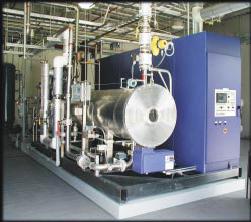Ozone concentration measurements in gas and water
Classical method for ozone concentration measurement in gas and water is iodometric. According to this method a certain amount of gas is bubbled through the neutral (pH = 7) 2% KI solution. After that the pH is adjusted to 2 by addition of H2SO4. Eliberated iodine is titrated back with Na2S2O3 solution to a starch endpoint. Contemporary ozone analyzers for gas are operating on the principle of UV-light absorption at the wavelength of 254 nm. Dissolved ozone can also be measured according to the same principle at the wavelengths of 253.7 or 258-260 nm.
To determine the concentration of dissolved ozone besides 0.2% solution of KI also the indigo trisulfonate solution can be used (Hoigne & Bader, 1979-1982). The disappearance of its blue color can be monitored spectrophotometrically at 600 nm.
Air preparation for ozone synthesis
Air as a feed gas for ozone synthesis must be properly filtered and dried (to the dew point of ~ (-55°C) to avoid the NOX and corrosive HNO3 formation in the ozone generator. Air is usually dried in three stages: with cold water, with refrigerator and with alumogel according to the scheme:
air filter – compressor – water cooler – separator – refrigerator – separator – receiver – adsorbers with Al2O3 – filter – ozone generator

PCI- WEDECO

